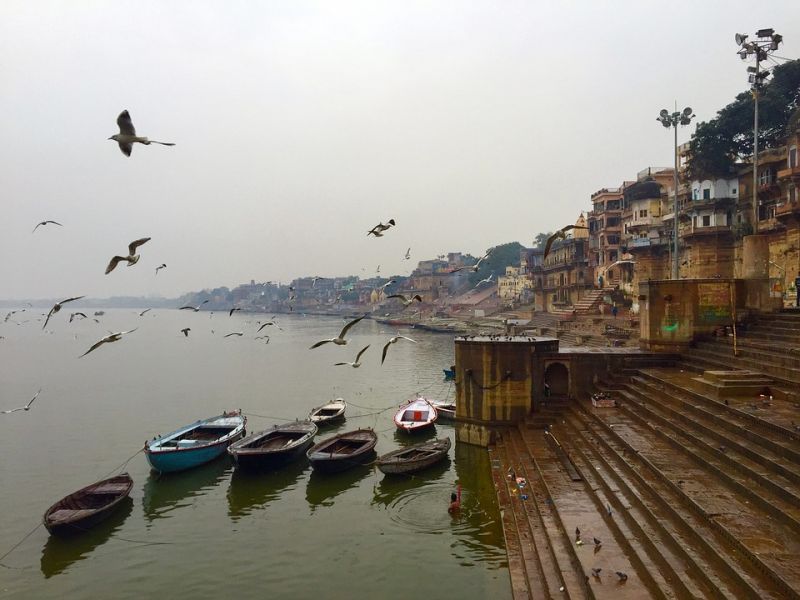Centre Turns to ‘Sewage-eating’ Microbes to Treat Ganga Water
Published on by Water Network Research, Official research team of The Water Network in Government
As urgency grows to show results for its Clean Ganga mission, the Centre is turning to bacterial bioremediation techniques to cut down the time lag in commissioning of sewage treatment plants (STP).
While STPs typically take two to three years to come up, large-scale application of bioremediation using 'sewage-eating microbes' quickens the process of improvement in the quality of river water, though only to an extent.

Under bioremediation technique, the activated microbes eat up contaminants such as oil and organic matter. The bacteria play a vital role in treatment of sewage without causing any release of foul odour. The process thus also reduces stench from raw sewage.
During the process of treatment, pollutants like heavy metals and toxic chemicals are reduced. The microbial dosing under the technique is done as per requirement assessed in terms of organic pollutants (microbial food) content in sewage.
Having successfully tested the technique at Bakarganj Nala in Patna, the National Mission for Clean Ganga (NMCG) authority has recently approved two more pilot projects - one each in Patna and Allahabad - and planned to scale it up further by identifying 54 drains across four states - Uttar Pradesh (30), West Bengal (20), Bihar (3) and Jharkhand (1) - where bioremediation techniques can be used to prevent polluted water from flowing directly into the Ganga.
Read full article: The Economic Times
Media
Taxonomy
- Treatment
- Sewage Treatment
- River Studies
- River Engineering
- Sewage
- River Restoration
- River Engineering
3 Comments
-
The "Ganga" can be permanently restored but it will require 10s of millions less human users, many billions more dollars and many years more time. Most Important: a 100% positive. permanent political will!. You cannot just apply "patches" to this problem!
The "Archea" organisms are only a tiny portion of the big picture. The total "Mineralization" (reducing organic materials to their elemental/ nutritional state) requires trillions of facultative/ obligatory, aerobic organisms including bacteria, fungi, algae, actinomycetes, macro-organisms (eisenia foetida)................many more. This is what we do!
Al White
1 Comment reply
-
Yes Allen you are correct. I believe what you are describing is Dr Elaine Ingraham's "Soil Food Web". As to the string of politically driven misinformation you offered allow me to fill in the scientific facts and allow political agendas to die on the vine. Did you know that the Archaea are aerobic microbes. The science term is microaerophilic. DNA microbes are part of the microbial balance in all things. The correct ration is 70% archaea /15% bacteria/15% fungi. Again they do not have the genetic code for reducing to elemental state. As to the 10s of million less user and $billions of Dollars these are not only ridicules but offensive to all mankind. You can not hold the middle class and the poor responsible for years of globalists dependency. This problem is too easy to fix. I have noticed that the easier the fix the louder and insulting the perpetrators become. In Europe's old English they had a very good saying. " Methinks thou doust protest too much".
-
-
I have written more than 100 comments encouraging the use of microbes for bioremediation of waste of all kinds. Glad to know someone is listening. One word of caution. You may already know the difference between RNA and DNA bioremediation microbes. If not please make sure you are using only the RNA species called Archaea. My caution comes from your mentioning a bioremediation bacteria. They have a very slow cleaning rate and do not have the genetic code for reducing organic materials into their elemental/nutritional state. If you attempt to use DNA bacteria your results will be very disappointing. This would kill your test projects even before they are started. My suggestion is to learn all about modern microbiology using the RNA Archaea and then request the proper protocols to insure your pilot programs success. Then you can build your new bioremediation cleaning facility for water, waste water, and all waste materials. This = the 100% recycling of water, eliminating all current and future trash dumpsites, crystal clear rivers and lakes, a toxic and pathogen free environment, the ability to rebuild your soils, increase the nutrient density and crop yields, decrease water usage, and most important wipe out hunger, thirst, and many nutrient deficiency diseases. BTW the average cost for the microbes is near $10 per acre or $20 per hectare. Many long term solutions will come from using natures cleaning microbes. You may call for information on Skype: guy_mcgowen. If you wish emailed pics and reports my email is biozomesales@biozome.com A pleasure sir.
-
We are using same Bio Remediation Aerobic Bacteria for our Bio Toilets which work on Aerobic digestion principle . For such waste water treatment if you need Aerobic Bacteria please contact me at dchakravarty22@gmail.com or 7604040507 . This bacteria for Waste Treatment was developed in collaboration with our partner lab in US . This can be used as a Bio Remediation for Waste Water.